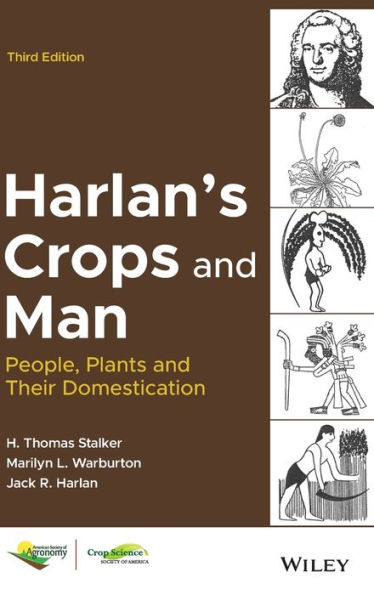The cultivation and harvesting of crops have been at the heart of human culture and development for thousands of years. As we have grown from hunter-gatherers into agrarian societies and industrial economies, our ongoing relationship with the plants that feed us and support our manufacturing has also evolved. So too, of course, have those plants themselves, with the combined forces of shifting climates, selective plant breeding, and genetic modification all working to alter their existence in profound and fascinating ways.
Coming some 30 years after its previous incarnation, the third edition of Harlan’s Crops and Man marks an exciting re-examination of this rich topic. Its chapters lay out the foundations of crop diversity as we know it, covering topics that range from taxonomy and domestication to the origins of agricultural practices and their possible futures. Highlights include:
- Archeological and anthropological studies of agriculture’s history and development
- Detailed examinations of the histories and classifications of both crops and weeds
- Explanations of taxonomic systems, gene pools, and plant evolution
- Studies of specific crops by geographical region
Updated to include the latest data and research available, this new edition of Harlan’s Crops and Man offers an illuminating exploration of agricultural history to all those engaged with plant science and the cultivation of crops.
The cultivation and harvesting of crops have been at the heart of human culture and development for thousands of years. As we have grown from hunter-gatherers into agrarian societies and industrial economies, our ongoing relationship with the plants that feed us and support our manufacturing has also evolved. So too, of course, have those plants themselves, with the combined forces of shifting climates, selective plant breeding, and genetic modification all working to alter their existence in profound and fascinating ways.
Coming some 30 years after its previous incarnation, the third edition of Harlan’s Crops and Man marks an exciting re-examination of this rich topic. Its chapters lay out the foundations of crop diversity as we know it, covering topics that range from taxonomy and domestication to the origins of agricultural practices and their possible futures. Highlights include:
- Archeological and anthropological studies of agriculture’s history and development
- Detailed examinations of the histories and classifications of both crops and weeds
- Explanations of taxonomic systems, gene pools, and plant evolution
- Studies of specific crops by geographical region
Updated to include the latest data and research available, this new edition of Harlan’s Crops and Man offers an illuminating exploration of agricultural history to all those engaged with plant science and the cultivation of crops.

Harlan's Crops and Man: People, Plants and Their Domestication
320
Harlan's Crops and Man: People, Plants and Their Domestication
320Hardcover(3rd ed.)

Product Details
| ISBN-13: | 9780891186335 |
|---|---|
| Publisher: | Wiley |
| Publication date: | 04/20/2021 |
| Series: | ASA, CSSA, and SSSA Books , #186 |
| Edition description: | 3rd ed. |
| Pages: | 320 |
| Product dimensions: | 0.39(w) x 0.39(h) x 0.39(d) |
